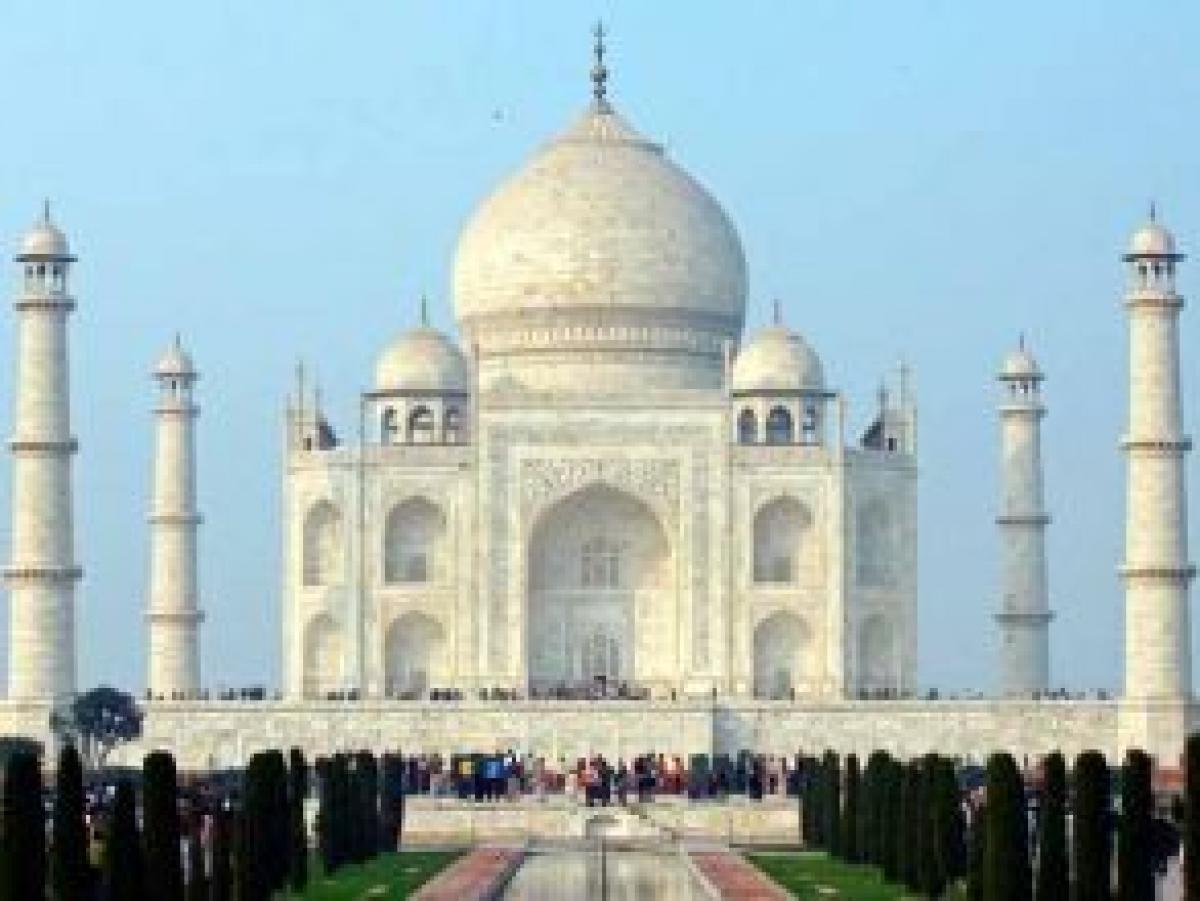Live
- BSP strongly opposes privatisation of VSP
- Master plan set to be finalised by month-end
- Cong govt to prioritise welfare of ex-servicemen: Uttam Kumar
- TTD revives free darshan for locals from tomorrow
- 13 people to get Civil Services free coaching
- Once cynosure of all eyes, Public Garden lake gasping for survival
- Business models changing fast, says Coal India MD
- Officials told to supply clean drinking water
- 3 held, 275 kg ganja seized
- Police sports meet concludes
Just In

Several spots and green marks were spotted on the white marble of the iconic Taj Mahal in Agra, following an insect attack from nearby Yamuna river.
Several spots and green marks were spotted on the white marble of the iconic Taj Mahal in Agra, following an insect attack from nearby Yamuna river.
Archaeologists have identified the pests as Goeldichironomus, a species that grows near polluted water bodies. The increasingly dirty Yamuna river near the Taj has served as a breeding ground for the insects.
However, Head of Entomology Department at St John's College, Doctor Girish Maheshvri, said in spite of attacking the monument, the insects are not likely to inflict harm on the marble of the Taj.
"Acting on a request by the Archaeological Society of India (ASI), we have identified the insect as Goeldichironomus. These grow in numbers when pollution levels of water bodies rise. They form a swamp and are attracted towards sand (stone). The swarming is a result of nuptial flight among the insects. They are attracted towards the Taj. The greenery on the monument's white marble is partially digested chlorophyll combined with their fecal matter. I don't think this will cause damage to the stone," Maheshvri told ANI yesterday.
This is the second such attack on the Taj by this species.
Efforts are on to clean the monument. But archaeologist Bhuvan Vikram Singh said the problem needs to be addressed at its roots.
"The deposit on the Taj is water soluble. We are trying to clean it with water. But cleaning the Taj Mahal with water will not solve the problem. We know where and how these insects grow, so if we solve the problem at the basic level, we can stop them from growing in numbers and there will be no marks on the Taj," he said.
Increasing urbanisation and industrialisation in Agra have taken pollution levels in the city to two or three times above global standards.
Pollution levels in the Yamuna too have been increasing rapidly, with industrial waste being dumped into it on a regular basis. Ash from dead bodies burnt in a nearby cremation ground that is released into the river is another factor.
The historical Taj Mahal was built by Mughal emperor Shah Jahan as a mausoleum for his wife Mumtaz Mahal. Attracting around 20,000 visitors every day, the monument was completed in 1648.
Iconic Taj Mahal in Agra city under attack by insects which have left spots on the monument’s white marble. pic.twitter.com/NWEYyPA18V
— ANI UP (@ANINewsUP) May 11, 2016

© 2024 Hyderabad Media House Limited/The Hans India. All rights reserved. Powered by hocalwire.com







